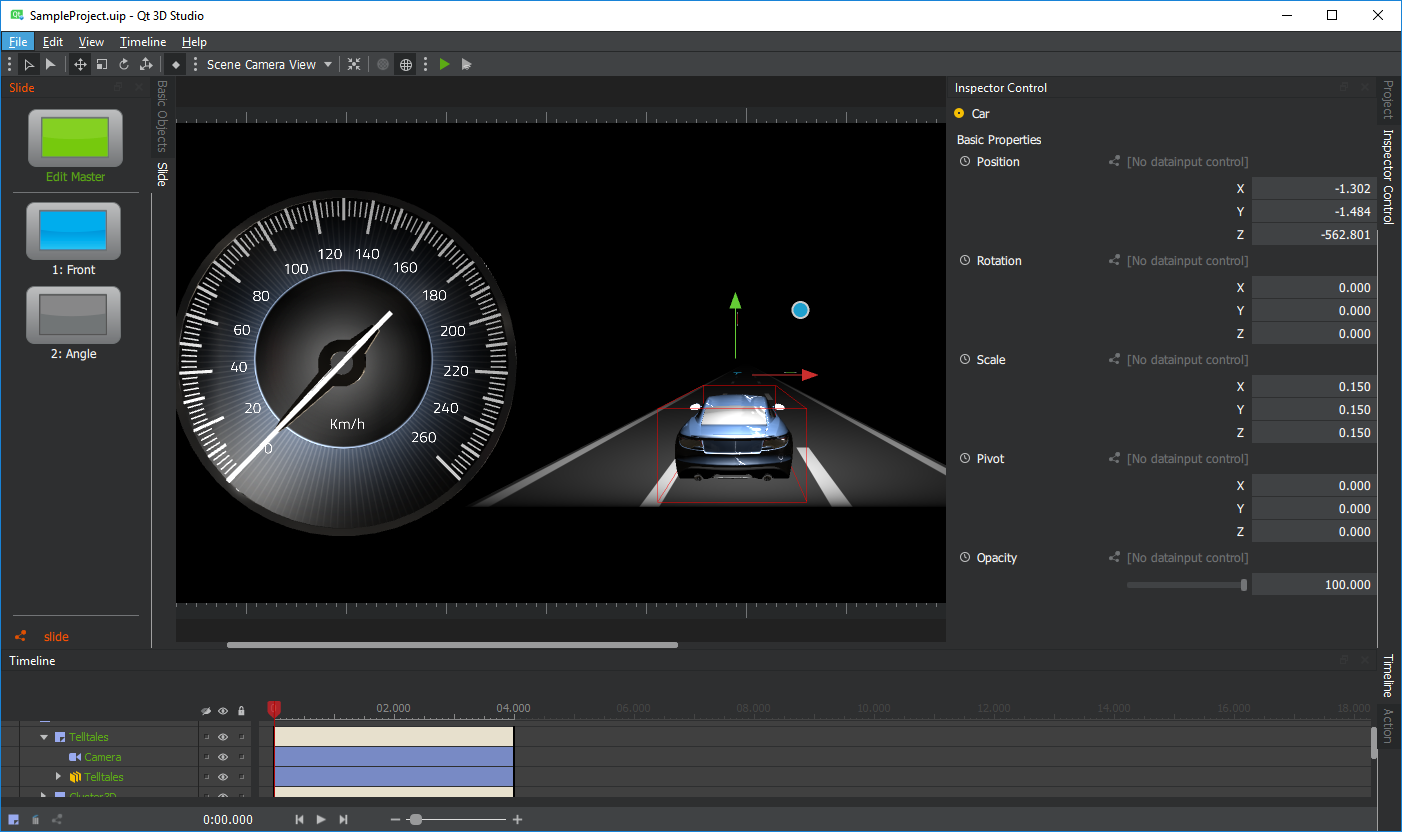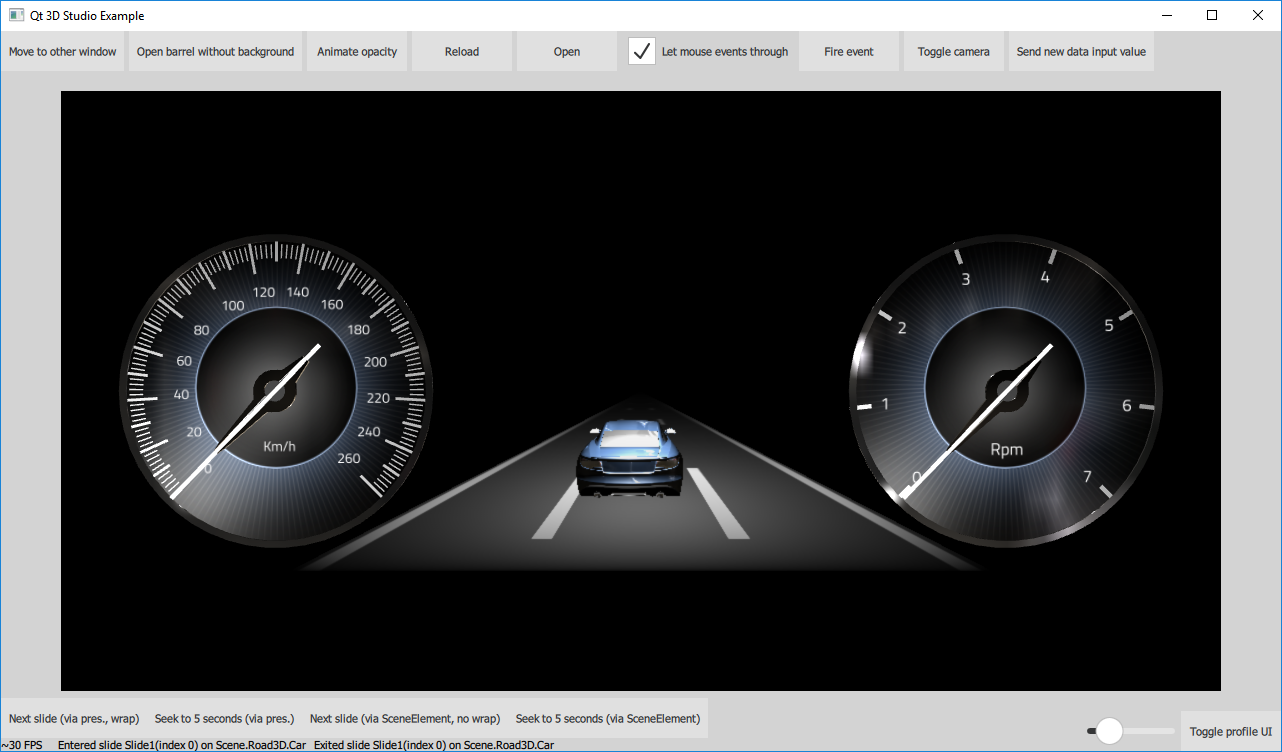C
Getting Started
The Qt 3D Studio OpenGL Runtime provides C++ and QML APIs for integrating Qt 3D Studio scenes into Qt applications, as well as the viewer application that is used in combination with the Qt 3D Studio application during the design phase.
Below is an example scene in the Qt 3D Studio application.

During the design phase, the standalone viewer is typically launched from the editor several times to check and verify the presentation in the runtime.

Once the design is done and the .uia, .uip, and other asset files are available, these can be loaded, rendered, and manipulated in Qt applications. This is done via the APIs provided in the studio3d module and the QtStudio3D.OpenGL QML plugin.
Below is the same scene loaded into a simple Qt Quick application (the simpleqml example) that composes the 3D content with the other Qt Quick items, for example the ones provided by Qt Quick Controls 2. In addition to displaying the presentation, the application can also control many aspects of it (slides, timeline, object properties) and can react on certain conditions, such as when a 3D object is clicked on (picked) by mouse or touch input.

Rendering Scenes
APIs are provided for the following Qt UI technologies:
- Qt Quick: here applications import QtStudio3D.OpenGL 2.8 which provides the Studio3D QML type, a Qt Quick item that can be added to Qt Quick scenes.
- QWindow or offscreen render targets (OpenGL texture): Q3DSSurfaceViewer can be used both to render to an on-screen QWindow, as well as off-screen into an OpenGL texture. The latter allows reading back and saving the frames, to generate pre-rendered video sequences for example.
Manipulating Scenes
Rendering Qt 3D Studio scenes is only part of the story since many scenes are not static and will not just display all their contents as they were done by designers in the Qt 3D Studio application. Rather, properties of scene objects (for example, the rotation property of a 3D model, or the diffuse color of the material associated with such a model) may need to be changed dynamically, at run time. The timeline or the current slide may also need to be adjusted based on the user's actions or other application state.
Above functionality is exposed via the following types:
| C++ Class | QML Type |
|---|---|
| Q3DSPresentation | Presentation |
| Q3DSElement | Element |
| Q3DSSceneElement | SceneElement |
| Q3DSDataInput | DataInput |
Advanced scene manipulation (for example, dynamically spawning and removing objects in a 3D scene) will be introduced in future versions.
Available under certain Qt licenses.
Find out more.
